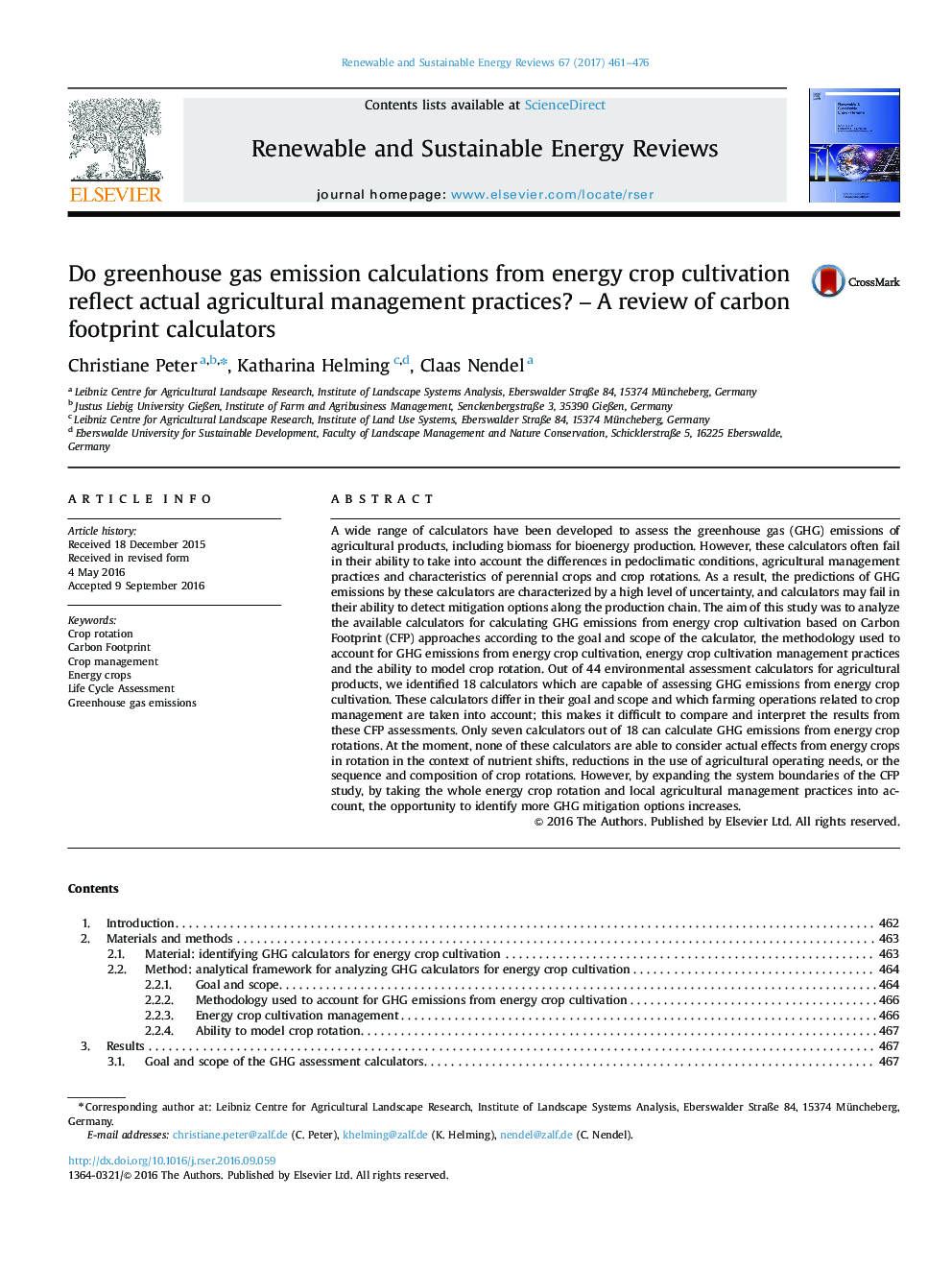| کد مقاله | کد نشریه | سال انتشار | مقاله انگلیسی | نسخه تمام متن |
|---|---|---|---|---|
| 5482749 | 1522318 | 2017 | 16 صفحه PDF | دانلود رایگان |
عنوان انگلیسی مقاله ISI
Do greenhouse gas emission calculations from energy crop cultivation reflect actual agricultural management practices? - A review of carbon footprint calculators
ترجمه فارسی عنوان
آیا محاسبات انتشار گازهای گلخانه ای از کشت محصولات کشاورزی منعکس کننده شیوه های مدیریت کشاورزی واقعی است؟ - بررسی ماشین حساب ردیابی کربن
دانلود مقاله + سفارش ترجمه
دانلود مقاله ISI انگلیسی
رایگان برای ایرانیان
کلمات کلیدی
تناوب زراعی، رد پای کربن، مدیریت محصول، محصولات انرژی، ارزیابی چرخه حیات، انتشار گازهای گلخانه ای،
موضوعات مرتبط
مهندسی و علوم پایه
مهندسی انرژی
انرژی های تجدید پذیر، توسعه پایدار و محیط زیست
چکیده انگلیسی
A wide range of calculators have been developed to assess the greenhouse gas (GHG) emissions of agricultural products, including biomass for bioenergy production. However, these calculators often fail in their ability to take into account the differences in pedoclimatic conditions, agricultural management practices and characteristics of perennial crops and crop rotations. As a result, the predictions of GHG emissions by these calculators are characterized by a high level of uncertainty, and calculators may fail in their ability to detect mitigation options along the production chain. The aim of this study was to analyze the available calculators for calculating GHG emissions from energy crop cultivation based on Carbon Footprint (CFP) approaches according to the goal and scope of the calculator, the methodology used to account for GHG emissions from energy crop cultivation, energy crop cultivation management practices and the ability to model crop rotation. Out of 44 environmental assessment calculators for agricultural products, we identified 18 calculators which are capable of assessing GHG emissions from energy crop cultivation. These calculators differ in their goal and scope and which farming operations related to crop management are taken into account; this makes it difficult to compare and interpret the results from these CFP assessments. Only seven calculators out of 18 can calculate GHG emissions from energy crop rotations. At the moment, none of these calculators are able to consider actual effects from energy crops in rotation in the context of nutrient shifts, reductions in the use of agricultural operating needs, or the sequence and composition of crop rotations. However, by expanding the system boundaries of the CFP study, by taking the whole energy crop rotation and local agricultural management practices into account, the opportunity to identify more GHG mitigation options increases.
ناشر
Database: Elsevier - ScienceDirect (ساینس دایرکت)
Journal: Renewable and Sustainable Energy Reviews - Volume 67, January 2017, Pages 461-476
Journal: Renewable and Sustainable Energy Reviews - Volume 67, January 2017, Pages 461-476
نویسندگان
Christiane Peter, Katharina Helming, Claas Nendel,
